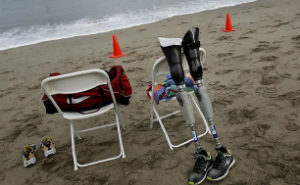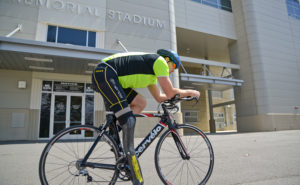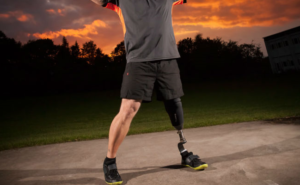Amputation affects many areas of life. Thanks to the rapidly evolving world of prosthetics, however, patients who have experienced trauma or amputation of the hand and other limbs have a greater chance of continuing to lead normal lives despite their injury.
Introducing prosthetics
Prosthetics have come a long way. They have moved away from solely meeting aesthetic purposes to having unique abilities resulting in the regained functionality that was once lost to trauma or amputation.
Consider these two main types of prosthetics you can find in Arkansas.
Body-powered prosthetic hands
Human movement is the driving force behind body-powered prosthesis. As the name suggests, precise body movements can trigger the hand’s actions, prompting basic open and close exercises via a cable system. There are also two main types of body-powered prosthetic hands: voluntary opening and voluntary closing.
Voluntary opening prosthetic hands use a cable pressure system to prompt the hand’s opening motion. The hand then automatically closes once the pressure is released. The opposite is true of a voluntary-closing prosthetic hand, with the hand automatically opening without pressure, but closing only once pressure is applied to the cable. A voluntary-open prosthetic hand is typically the most popular choice for people with limited strength, but the option selected is dependent on the needs and preferences of the individual. A body-powered prosthetic hand is a more traditional option and usually quick for the patient to learn to use.
Electric-powered prosthetic hands
Unlike body-powered prosthetic hands, myoelectric prosthetic hands use your residual arm’s muscles and nerves to help “train” the prosthetic hand how to move.
With this training, the prosthetic hand is able to learn patterns of behavior from contracted muscles in the residual arm. A significant period of learning is required for a person to fully use this style of prosthetic. However, a benefit of persevering through this process tends to be a more realistic look and feel, more closely resembling the hand that has been lost.
Also, the type of learning undertaken by the amputee is dependent on the injury and amputation sustained. For example, above-elbow amputees will learn to move their prosthetic hand using their biceps and triceps, while below-elbow amputees will learn to reply more on their forearm and wrist muscles.
Technological developments
Prosthetic hands continue to be developed to provide advanced functionality for the user, some of which can now include individual finger movement and sensory reception. In sports medicine, competitive prosthetics are being developed to facilitate a range of varying grips supported by an app, as well as microprocessing technologies that assist in backwards movements and squat-to-standing motions.
Hand sensitization has proven difficult to master, but research is promising. There are currently two types of sensors that can be embedded into prosthetic hands: position sensors and force/tactile sensors. Position sensors provide the hand with proprioceptive-like information, where as force/tactile sensors assist in the measuring interactions with the external environment, such as the hardness or roughness of terrain, as well as temperature.
Recent breakthroughs have provided hope for mainstream use. In 2018, Arizona State University researcher James Abbas alongside his multi-institutional research team introduced a new prosthetic hand system at the annual meeting of the Society for Neuroscience. This technology featured a wirelessly controlled, implanted neurostimulator designed to restore feeling to a person with a hand amputation.
Taking care of your prosthetic hand
For a prosthetic hand to work optimally and interfere as little as possible in day-to-day life, it is critical that it is cared for appropriately. This includes keeping the prosthetic clean, especially after a period of strenuous activity, as well as caring for the skin that comes into contact with the prosthetic to avoid pain or infection. When fitted with a prosthetic hand, it is important that the instructions given by the healthcare team are followed accurately and any concerns about the fitting or comfort of the prosthetic are communicated.
Although losing a hand due to injury or amputation is always traumatic, there is hope for regaining significant movement, function, and sensation thanks to the range of options now available within the field of prosthetics in Arkansas. With proper care, a prosthetic hand does not need to interfere with your everyday life. Moreover, with the correct support, a prosthetic hand can help a patient maximize their chances of living a normal life again.
For more information
Do not think losing a hand is the end of your life. To learn more about getting the right prosthetic for you, contact Horton’s Orthotics & Prosthetics at (501) 683-8889.




Leave a Reply